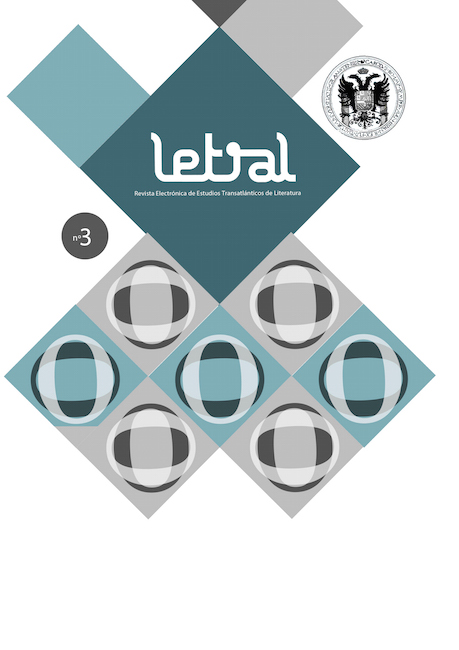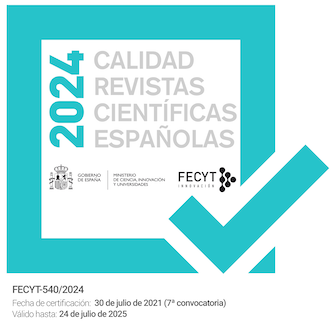ine y novela sobre los años de violencia peruana
DOI:
https://doi.org/10.30827/rl.v0i3.3575Keywords:
Violence In Peruvian Literature, Film At The End Of The CenturyAbstract
The insurgency of Sendero Luminoso (“Shining Path”) in Peru in the eighties led to the “década de violencia” and the preoccupation of sociologists, anthropologists, political scientists and writers and film directors alike. In this paper I shall study some literary texts and films which place in its centre the question of violence perpetrated by Sendero, the army and politicians, with special emphasis on writers like Félix Huamán Cabrera, Alonso Cueto and Nicholas Shakespeare and films by John Malkovich, Francisco Lombardi and Marianne Eyde.Downloads
References
Bedoya, Ricardo. Un cine reencontrado. Diccionario ilustrado de las películas peruanas. Lima: Universidad de Lima, 1997.
Bustamante, Emilio, I. León Frías, F. Vivas Sabroso y R. Bedoya. “Crimen y esperanza. Entrevista a Francisco Lombardi”, La gran ilusión, 2. Lima (1994): 90-97.
Canetti, Elias. Masa y poder. Madrid: Alianza/Muchnik, 1997.
Carpio, Teresa. “Entrevista a Sofía Macher, ex miembro de la Comisión de la Verdad de Perú”. Amnistía, 64, Madrid (2003): 34-37.
Comisión de la Verdad y Reconciliación. Informe final. 2003 (www.cverdad.org.pe).
Comisión de la Verdad y Reconciliación. Informe a la Fiscalía de la Nación sobre el caso Huanta. 2003a (www.derechos.org/nizkor/peru/doc/huanta1.html).
Cotler, Andrés. “El cine peruano y Sendero Luminoso. La vida es una sola”. La gran ilusión, 2. Lima (1994): 98-102.
Cotler, Julio y Romeo Grompone. El fujimorismo. Lima: IECP. 2000.
Degregori, Carlos Iván. La década de la antipolítica. Auge y huida de Alberto Fujimori y Vladimiro Montesinos. Lima: IEP. 2000.
Escobar La Cruz, Ramiro. “El Magistrado asesinado”. Caretas, 1628, 20 de julio. Lima, 2000.
Fernández-Santos, Ángel. “Una película polémica. La boca del lobo”. El País, 2 de enero 1989.
Gnutzmann, Rita. “La novela y el cuento de la violencia desde los años 80”. La Página (Tenerife), 67/68 (2007): 41-56.
González, Raúl. “Ayacucho: El desfile de la violencia”. Quehacer, 33 (1985): 34-47.
Huamán Cabrera, Félix. Candela quema luceros. Lima: Editorial San Marcos, 2003.
Lévano, César. “La captura bajo una luz nueva”. Caretas. Lima, 1998. www.caretas.com.pe/1998/1533/captura/captura.htm.
Nieto Degregori, Luis. Con los ojos para siempre abiertos. Lima: El Zorro de Abajo Edicione, 1990.
Ortega, Julio. Adiós, Ayacucho. Lima: Ishi Publ./Mosca Azul, 1986.
Roncagliolo, Santiago. “El loco más peligroso de América” y “La cuarta espada del comunismo”. El País, 10 y 11 de octubre (2005): 15-16.
Shakespeare, Nicholas. The Dancer Upstairs. London: Vintage UK, 2005.
Stern, Peter A. Sendero Luminoso: An Annotated Bibliography of the Shining Path Guerrilla Movement, 1980-1993. Austin/Texas: SALALM Secr. Univ. of New Mexico, 1996.
Vargas Llosa, Mario. Historia de Mayta. Barcelona: Seix Barral, 1984.
Downloads
Published
How to Cite
Issue
Section
License
Revista Letral is an open access journal under a Creative Commons Atribución-NoComercial 4.0 license.
The works published in this journal may be reused, distributed and publicly presented for non-commercial purposes, provided that: cite the authorship and the original source of the publication (journal, publisher and URL of the work).
We strongly recommended you to share our published articles in social and scientific networks, institutional and public repositories, personal or institutional websites, blogs, Google Scholar, ORCID, ResearchID, ScopusID, etc.
The journal allow the author(s) to hold the copyright and to retain publishing rights without restrictions.
We are completely free, both for readers and authors.














